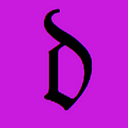Member-only story
The Blue Screen of Death: have GUIs truly defeated iconoclasm?
There’s nothing like an epic crash to remind ourselves of the robustness of text

Recently, multiple businesses worldwide, including banks, airlines, TV channels, and more, were forced to suspend their operations due to a faulty cybersecurity update to Windows. The update took down thousands of computers, causing them to boot loop and crash to a blue screen of death. Suddenly, our beloved “icons” were gone, and we thrashed around helplessly without them. This may be a good time to think a little about the processes by which Microsoft became such a huge monopoly.
At the time of the crash, I had been thinking about the exceptional phase in history (beginning in the 15th century and only recently defeated by the widespread use of interactive color screens) that resulted in the cultural acceptance of black-and-white pages without any illustration or pictures. Part of what drove this line of thinking was that another cyber-security failing had meant that in research, we are back to ordering books at the British Library by pencil and paper slips instead of the online systems we once took for granted. This reversion, and time lurking in the library and taking in its permanent exhibits, served to remind me that manuscripts have always been decorated with windows of colour and illustrations called “miniatures”.
I had assumed that “miniatures” meant small illustrations (like the usage for those little bottles of whisky and other spirits that are considerately handed out on long-haul flights). It was not until I started to write this that I stumbled upon its wonderful etymology: the word refers to miniare (to colour with a lead-based red pigment the Romans called minium). These drawings used to be delineated with a red border and that is the actual origin of the term.

Similarly, the term “icon” — the major technological innovation of Microsoft Windows being the icon-based Graphical User Interface (GUI) for enterprise computing — is said to be derived from eikṓn in Ancient Greek (image, resemblance). Originally, the word referred to…







